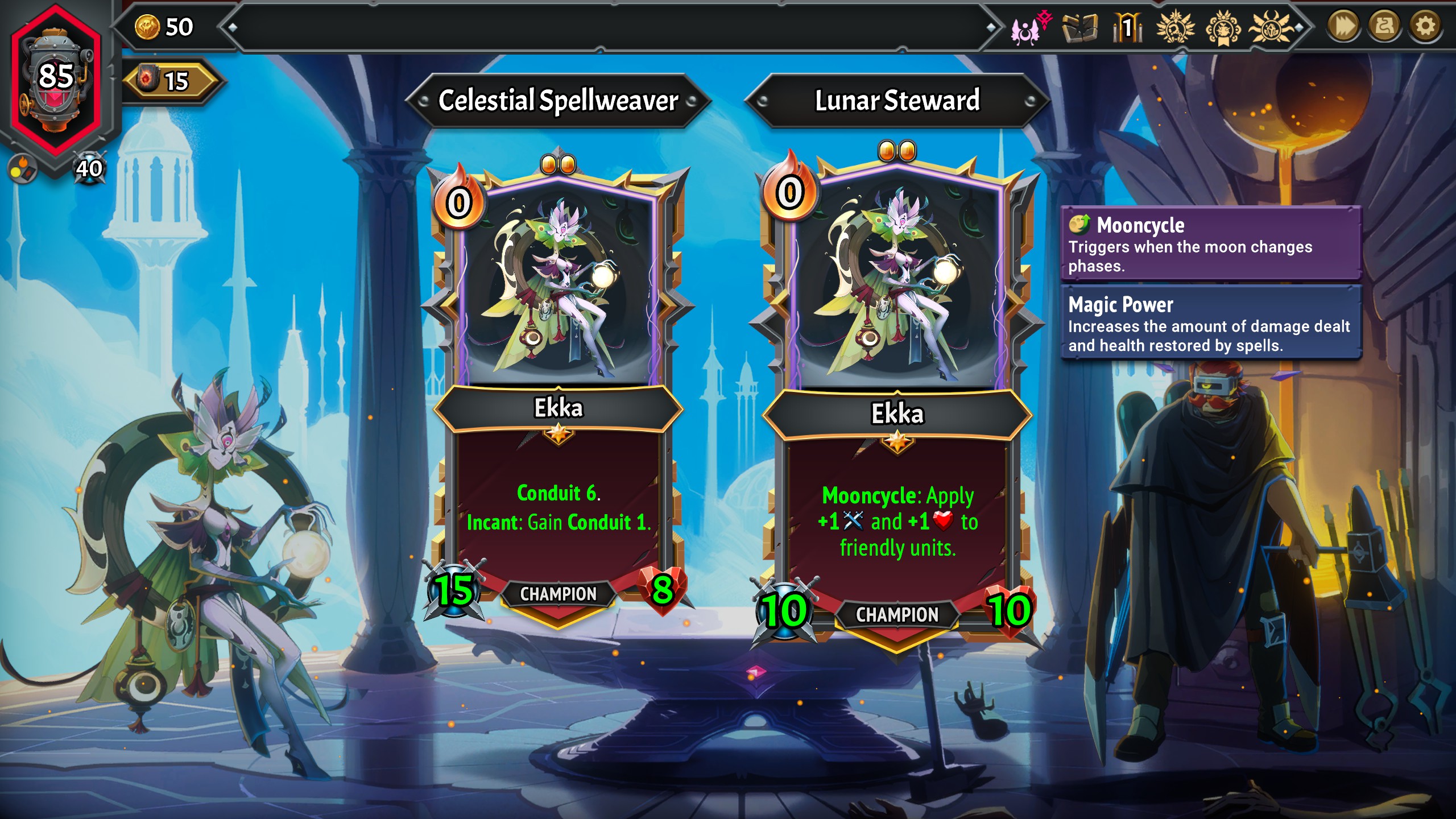
Ever been jealous seeing someone start one of your favorite games for the first time, knowing that even if you replayed it you'd be too tainted by knowledge to ever go through the depth of feeling you cherished as it first blew you away? Somehow, Monster Train 2, pulling into the station, is able to whisk me away on a journey of discovery once again, introducing enough changes and new mechanics to the Monster Train roguelike formula that it genuinely feels like learning the game from scratch again.
To some that may sound like a negative, but for me it's exactly what I want from a roguelike sequel like this. Monster Train 2, from developer Shiny Shoe, isn't so faithful to the original that its iterations feel pointless – many a roguelike followup has been left barely played as I simply return to the first game. Instead, every evolution keeps the game firmly on the tracks to new horizons, and I'm meeting them full steam ahead. It's so engrossing, that in some ways it's a blessing I won't have permanent access to the early build, and can finally text my family back.
Choo choo choose this
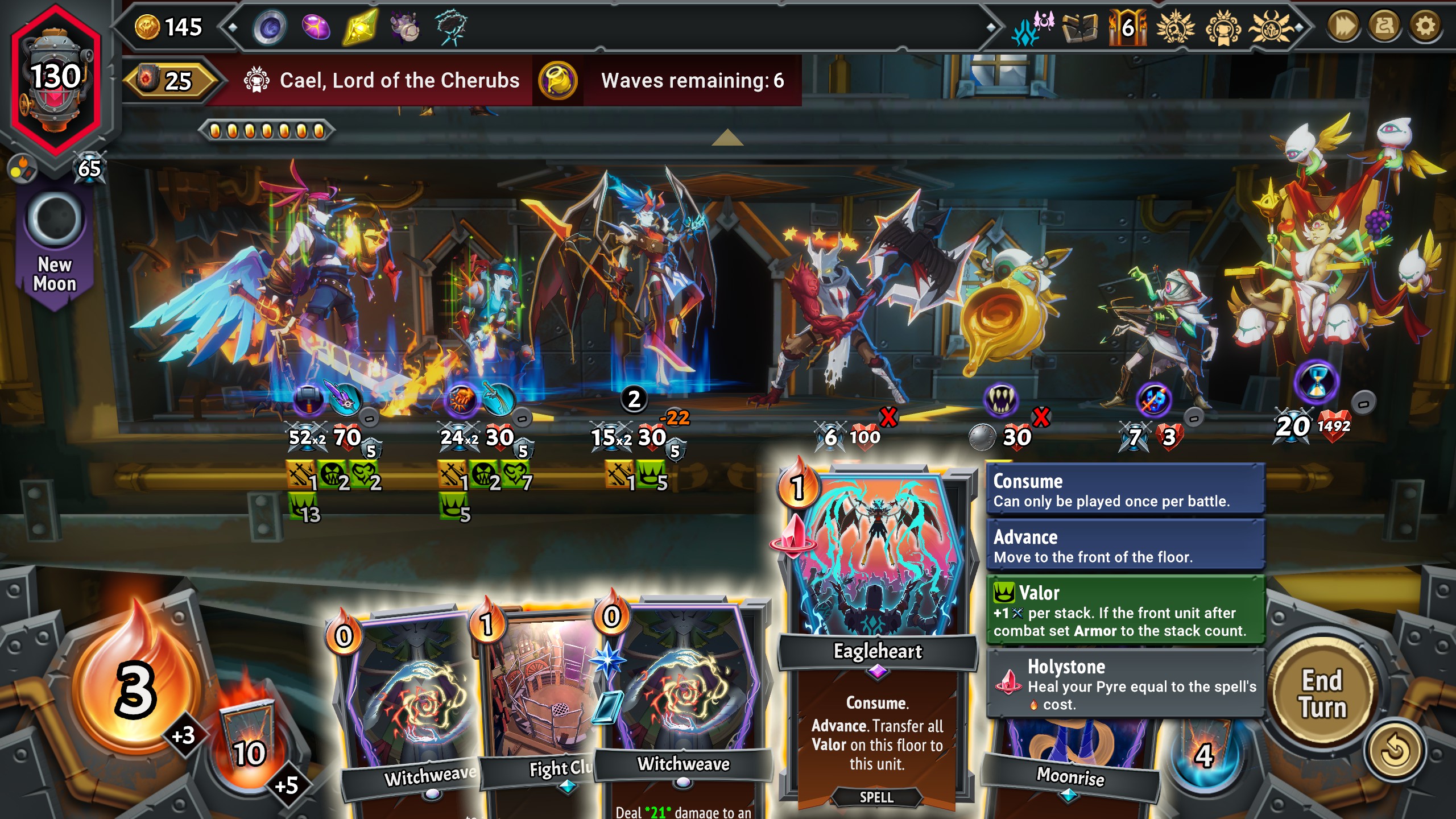
Which isn't to say you'll be completely lost. After all, as different as a Class 37 and Class 800 are (look 'em up), a train is still a train. Monster Train is still Monster Train. You're still trying to ferry your pyre – the last remnant of Hell – to the endpoint of a map, upgrading your squad of monsters to better protect it and jumping into strategic, card-based battles.
Developer: Shiny Shoe
Publisher: Big Fan Games
Platform(s): PC, PS5, Xbox Series X/S, Switch
Release date: May 21, 2025
Each skirmish zooms in on your carriage, allowing you to scroll between four floors as each turn a new wave of enemies boards you from the bottom, always ascending after a round of combat. With your pyre at the top, you place units on the first three floors (only so many will fit – though capacity can be improved), spending embers to place them or to play spells.
Reach the final wave, and a boss enemy will progress floor by floor through as many rounds as combat as is necessary for either you or them to finally break. The further you get, the tougher the foes, and the more devious the debuffs until the game-breaking feeling deck you've assembled is holding on by only the skin of its card sleeve. It's an exhilarating feeling each time you manage to pull off an unlikely challenge, so much so that it will be my icebreaker at my cousin's wedding.
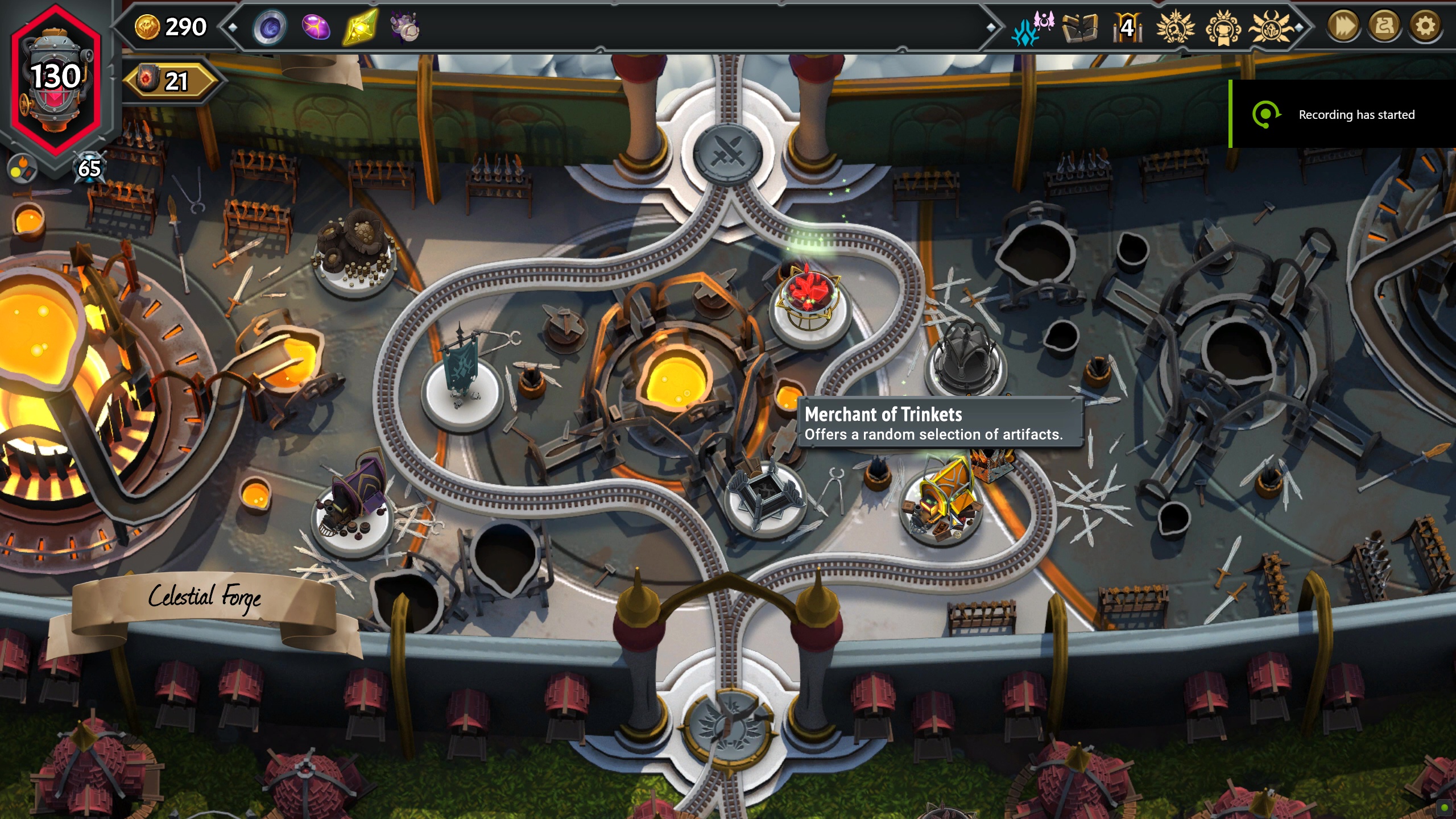
Whereas in the first game you rode the track to the depths of Hell to restore the inferno's flames, here the rails twist and turn up high into heaven. With both Heaven and Hell under threats from the Titans, a pact has been formed to topple the usurpers, and Hell's last embers are the only way to get it done.
Getting to go hands-on with three of the five all-new clans on offer, I make several – that sounds reasonable, right? – runs at accomplishing my task, trying them out in different combinations. Each run has you picking one clan as a primary and one as a secondary with deck upgrades coming from both pools. Sure, there's always a learning curve to getting to grips with a new set of cards, but I'm immediately struck by how in-depth even these early, basic versions of these decks are with the strategies they offer.
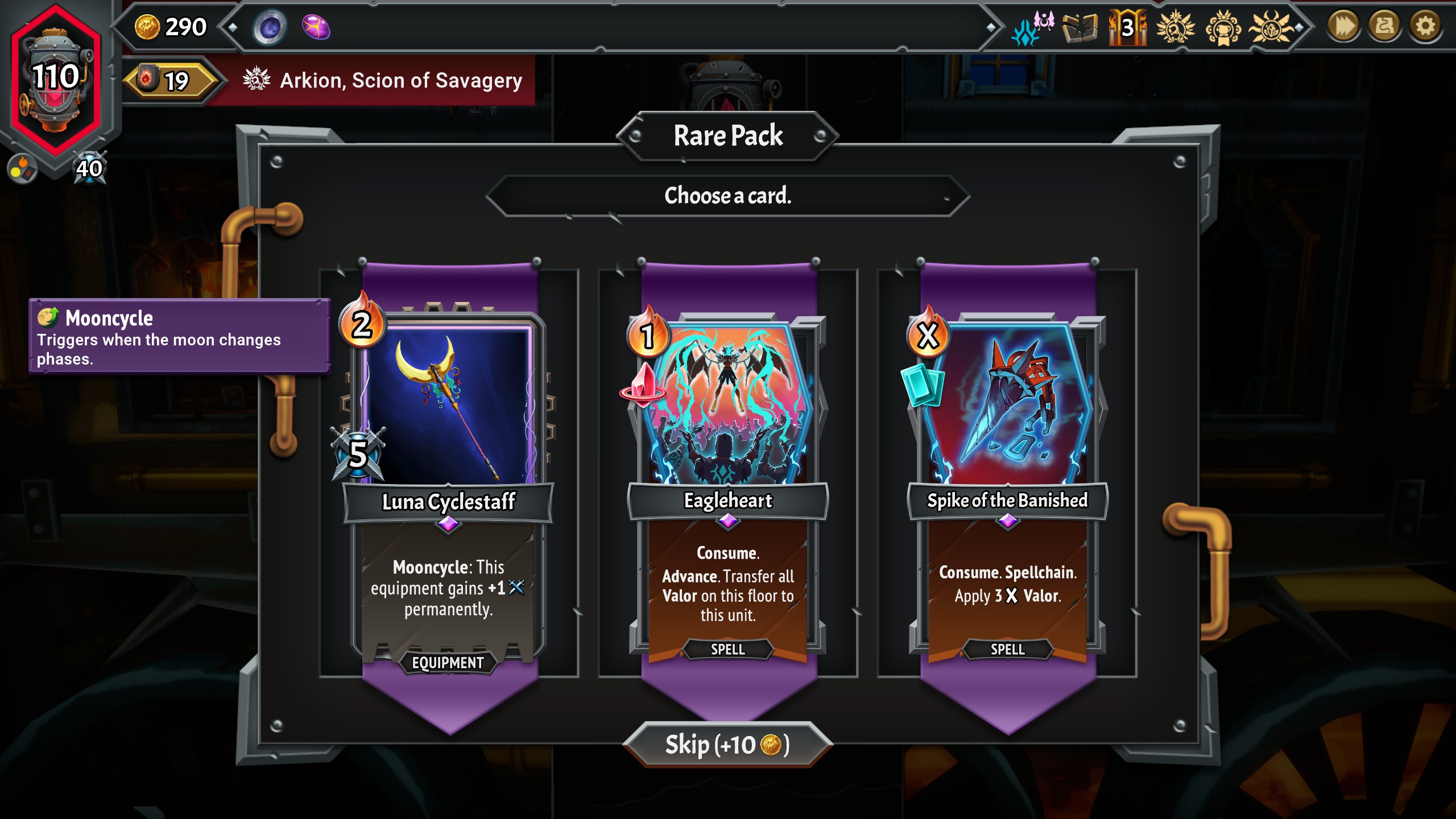
The Banished, for instance, angels who took refuge in Hell long ago and for whom this venture is a homecoming of sorts, are all about building up Valor to boost their attack and, should they end the turn at the front (units are side-on, left to right), gain stacks of armor. There's plenty of ways to gain more Valor, often revolving around shifting their position – even up and down train rooms – making them extremely mobile.
The draconic Pyreborne, however, are, on the surface, simpler damage dealers – but can apply stacks of pyregel to enemies to make them take even more damage. They can also build up a dragon's hoard currency over time that can be traded in for rewards like run-boosting artefacts and extra currency between rounds. But the more you trade in at once, though, the better the reward – so how long will you risk waiting to get a bonus?
The Luna Coven, on the other hand, are all about applying Conduit buffs that power up the strength of spells cast in rooms, while also using a moon phase system to further enhance abilities – each round switches between a new moon and a full moon. Here, simple zero-cost ember spells that do just a single point of damage may end up well into double-digits once you've got your conduits going.
Steam machine
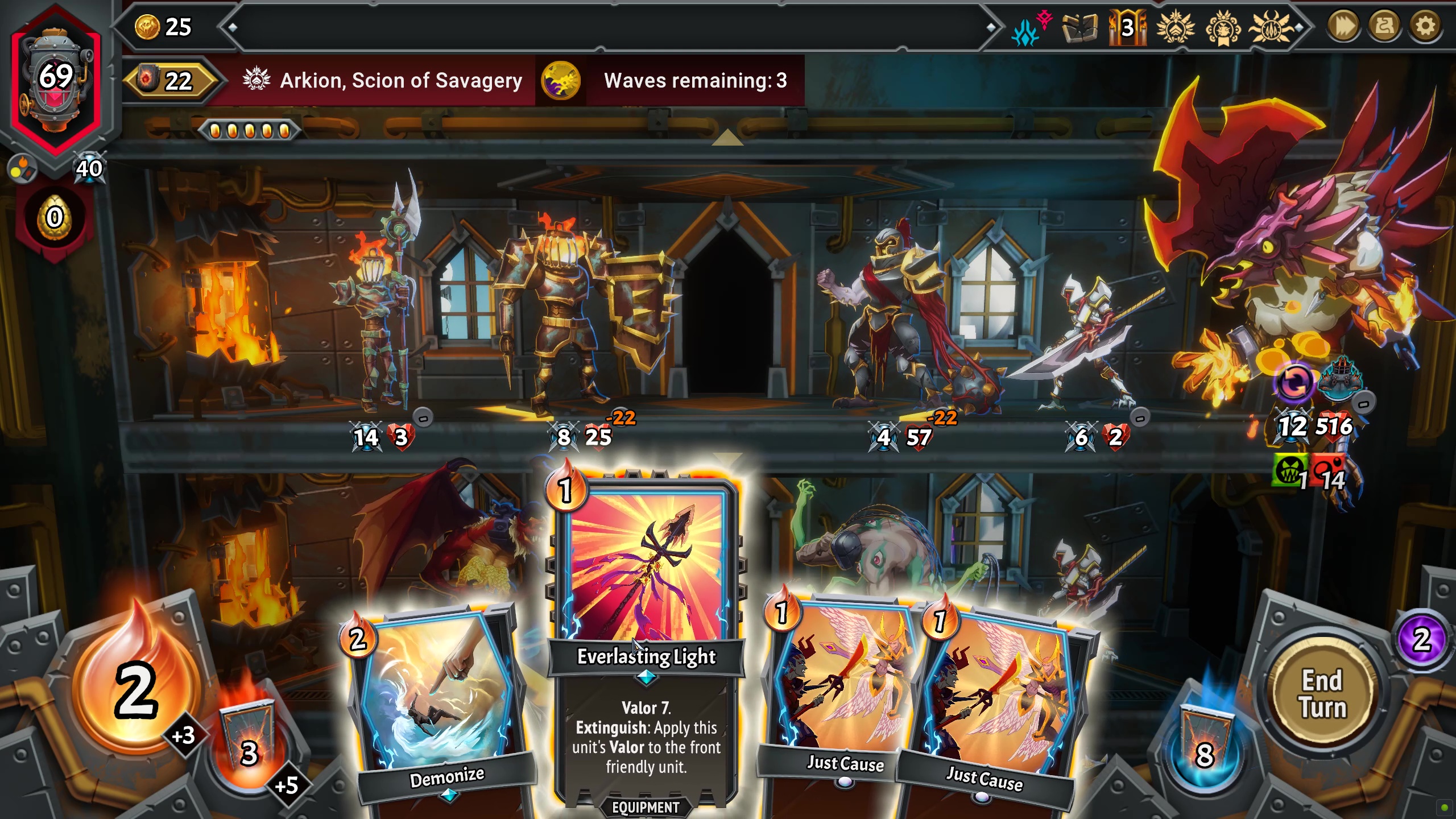
Each are surprisingly deep and complex on their own, but always mixing and matching forces you to think about all the little synergies that come into play when clans team up in a deck. Luna Coven, for instance, won't just power up their own spells with Conduit – those applying Pyregel will get a buff too. And if Pyreborne already skew stronger, how much tougher can they get when you start giving them Valor buffs?
"I spent my first run thinking 'wait, did I get really bad at Monster Train? Was I ever good?'"
I spent my first run thinking 'wait, did I get really bad at Monster Train? Was I ever good?' It wasn't until I began to get to grips with the intricacies of each clans' play strategies – and, more importantly, how they can power each other up – that I stopped being a damage sponge and was able to bring the pain myself.
Now, after several runs, and beginning to unlock more cards for each clan, I'm getting a glimpse of how far these plans can really be pushed. All it took was refusing to take off my conductor cap and being so engrossed with each run that it made me more than a little bit late to: 1. a family dinner (nobody noticed I was absent) 2. a work meeting (nobody noticed I was absent) and 3. ironically, a train.
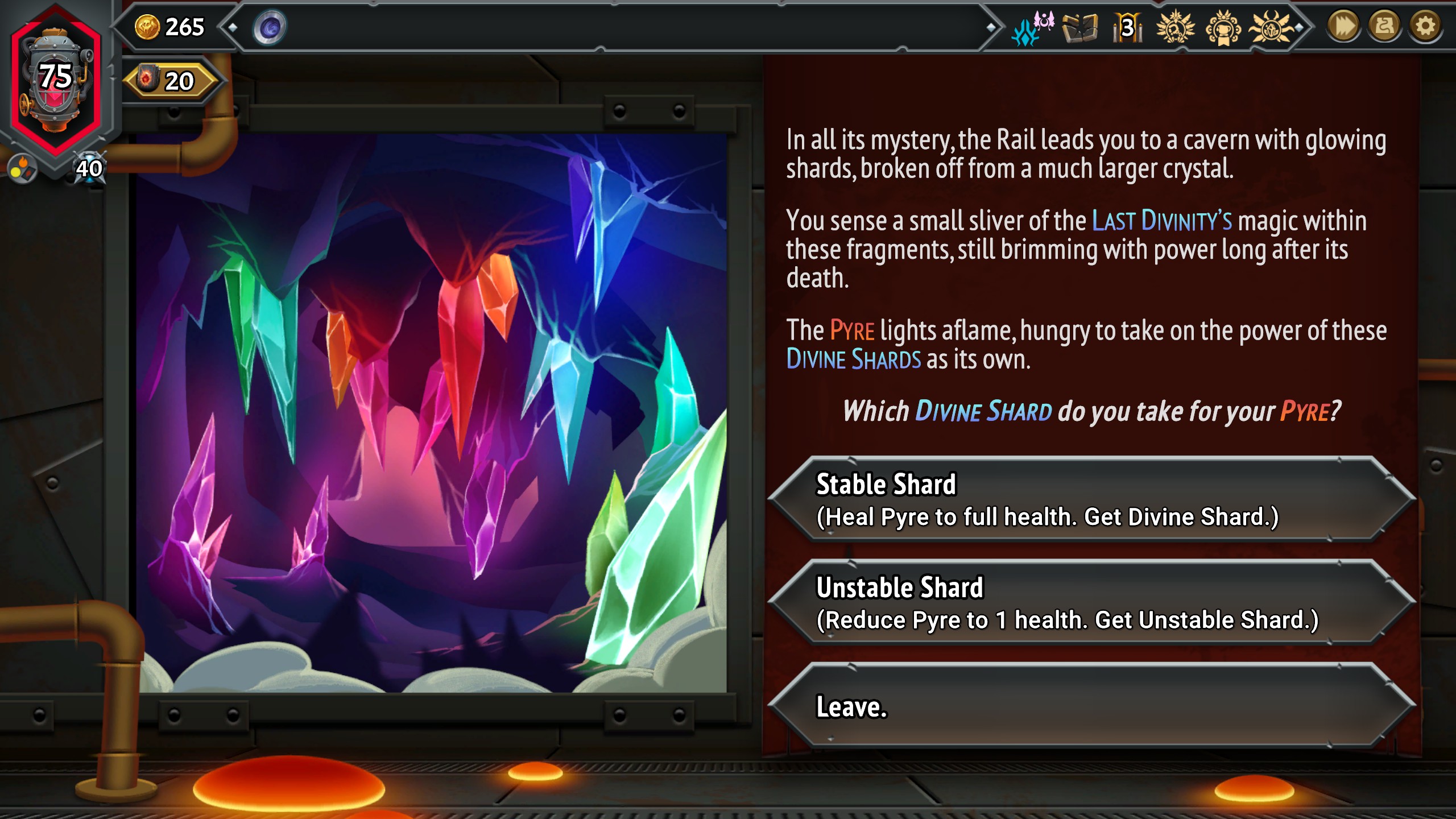
"The first game had its complexities, but Monster Train 2 is brimming with them."
On top of adding new spells and units to each deck, and upgrading each one's champion to follow multiple different routes, there's loads more customization in Monster Train 2 that really does make it feel like you're always having to make tiny decisions that radically alter each run. Rooms can now be applied to, well, each train room – giving units passive buffs from extra damage to accruing bonuses when they slay monsters. Similarly, there's equipment. You won't believe it, but you equip these to your units to give them even more special bonuses. Even your pyre can be modified, giving runs their own unique flavor.
The first game had its complexities, but Monster Train 2 is brimming with them. Almost every card has more than one application out of the box, which can be enhanced further – all while other possibilities whirr around them. Which means while you're always making choices, for how to expand your deck or even how to play it on a round by round basis, you're always haunted by the ones you didn't make too. When so much is viable, it's on you to play conductor. Monster Train 2 doesn't just have a hold of me when I'm on a run, but even when away from the game I'm still going over the options in my head for what to do next time, allowing gravy to overspill mid-pour, my eyes empty, lost to the pyre.
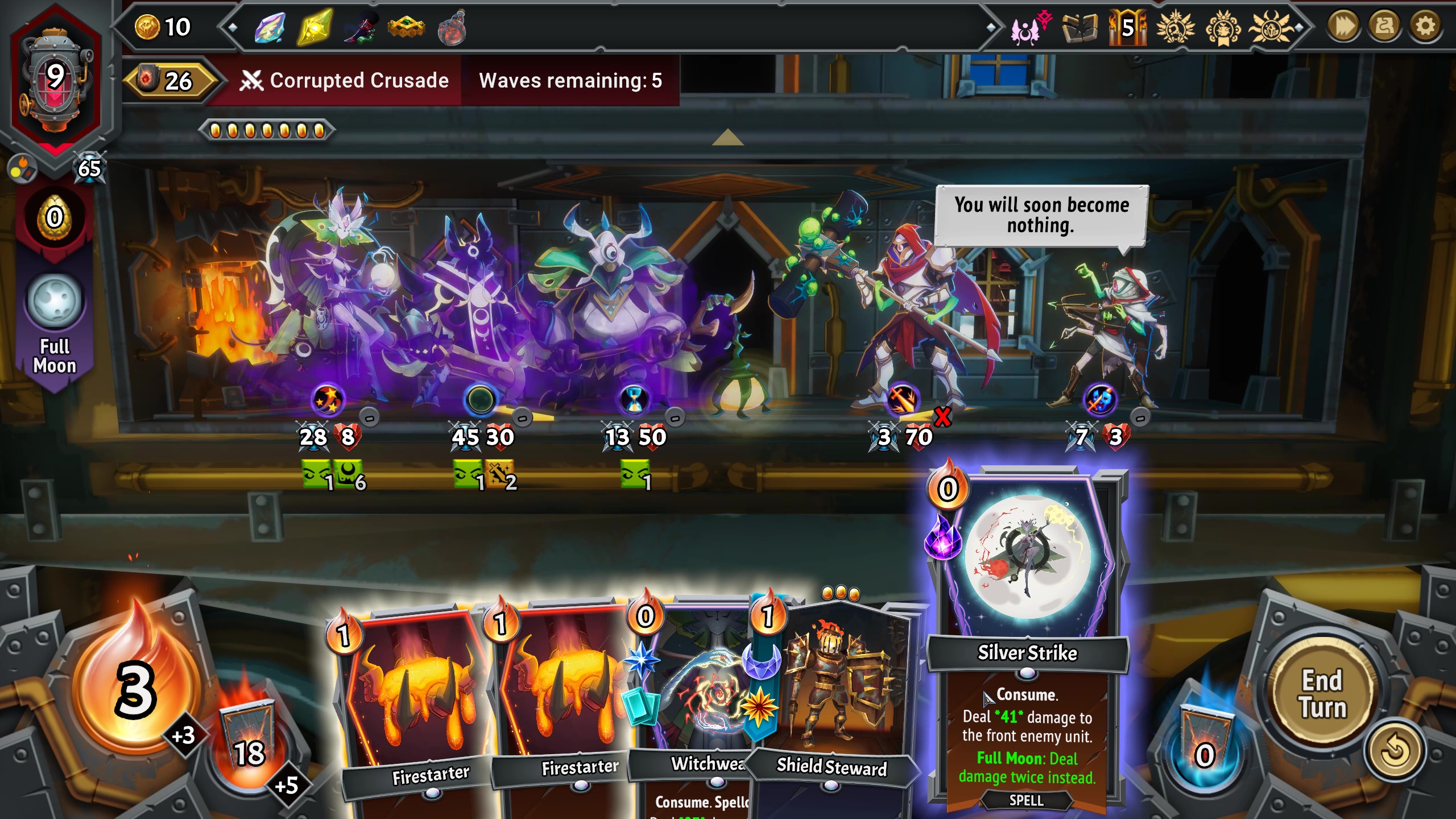
It's a host of small tweaks and additions. Nothing revolutionary taken on their own, but it's in how it all comes together that Monster Train 2 really begins to impress me. What I loved about the first Monster Train was how, to succeed, you were really encouraged to get into the cogs of your deck, adding doses of oil to between every round to make sure it ticks like a charm.
Not only are you improving cards – adding powers to generate extra buffs, or remove drawbacks like Consume (meaning it won't be redrawn once used each battle) – but paring down your deck by discarding what's unnecessary too. While always a boon in competitors like Balatro, few deckbuilding roguelikes get you to think so closely about card composition.
Which means every card, every ability, and every buff matters a lot in Monster Train 2. Small additions, like a few extra gears, would make a hell of a difference in any clock – and here they change every tock just enough to make the mechanisms of Monster Train 2, while familiar, feel almost entirely different. I may be through the barriers, my demo time over, but I'm already turning back around, ready to board again. My many hours in Monster Train were just the beginning. With Monster Train 2, I still have so much more to learn.
There's a strong chance Monster Train 2 could be one of the best roguelike games!







